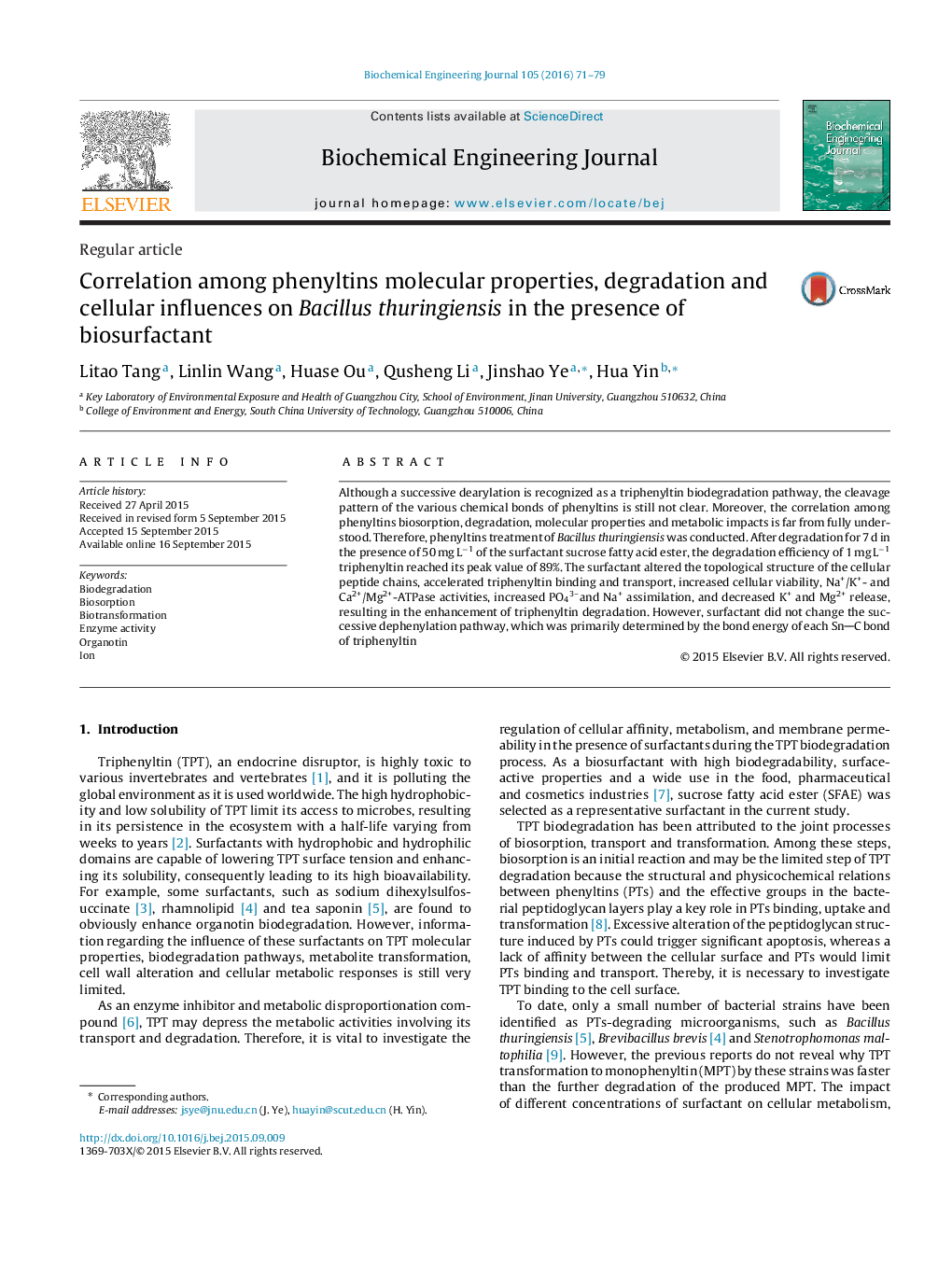| Article ID | Journal | Published Year | Pages | File Type |
|---|---|---|---|---|
| 2807 | Biochemical Engineering Journal | 2016 | 9 Pages |
•SFAE altered peptide structure of cell wall accelerating TPT binding and transport.•SFAE enhanced TPT solubility and degradation.•TPT degradation pathway was determined by bond energy of SnC bonds.•TPT is successively degraded to form DPT and MPT, and finally to tin.•SFAE enhanced ATPase activities, cell metabolism, PO43–, Na+ and carbon use.
Although a successive dearylation is recognized as a triphenyltin biodegradation pathway, the cleavage pattern of the various chemical bonds of phenyltins is still not clear. Moreover, the correlation among phenyltins biosorption, degradation, molecular properties and metabolic impacts is far from fully understood. Therefore, phenyltins treatment of Bacillus thuringiensis was conducted. After degradation for 7 d in the presence of 50 mg L−1 of the surfactant sucrose fatty acid ester, the degradation efficiency of 1 mg L−1 triphenyltin reached its peak value of 89%. The surfactant altered the topological structure of the cellular peptide chains, accelerated triphenyltin binding and transport, increased cellular viability, Na+/K+- and Ca2+/Mg2+-ATPase activities, increased PO43–and Na+ assimilation, and decreased K+ and Mg2+ release, resulting in the enhancement of triphenyltin degradation. However, surfactant did not change the successive dephenylation pathway, which was primarily determined by the bond energy of each SnC bond of triphenyltin
Graphical abstractFigure optionsDownload full-size imageDownload as PowerPoint slide
